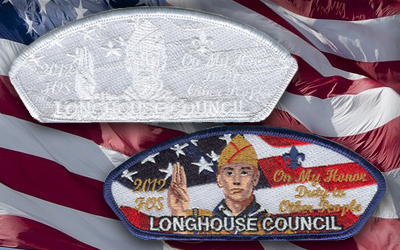The hobby of trading has been a part of Boy Scout tradition for many years. Before patches became the most popular trade item, Scouts attending Jamborees would trade neckerchief slides or even common items (like seashells and pine cones) representing where their troop was from.
There are so many varieties of scout patches to trade how do you decide what you want? Most traders focus on one particular set of patches, such as: CSP's, types of camp patches, OA Patches, or National BSA patches. Focusing on a particular style of patch can help you trade more successfully and build a cohesive collection.
Once you start getting into the trading game, you will observe and learn the unspoken rules of trading. Here are a few tips on trading etiquette.
1. Don't interrupt a trade that is in progress.
2. Ask before handling someone elses patches.
3. Always thank the other person for letting you see their patches, even if you decide not to trade.
3. If you decide to trade, always be honest and trade fairly. The trading community is a tight one. If you are dishonest, or rude, your reputation will be damaged quickly and no one will want to trade with you.
4. Finish the trade with a Scout handclasp.
There is a lot of shorthand and lingo used among traders, and you should ask an experienced trader to school you on the abbreviations for the types of patches before you start trading.
There is also helpful information on the site:
If you are new to the patch trading phenomenon you should probably make plans to attend a "tradoree" and see for yourself what goes on at this type of event.
Trading can be fun hobby that can introduce you to a lively community and some amazing patches.
(Thank you to our resident Scout and patch trading expert, Tom Wadnola for providing information used in this post.)


